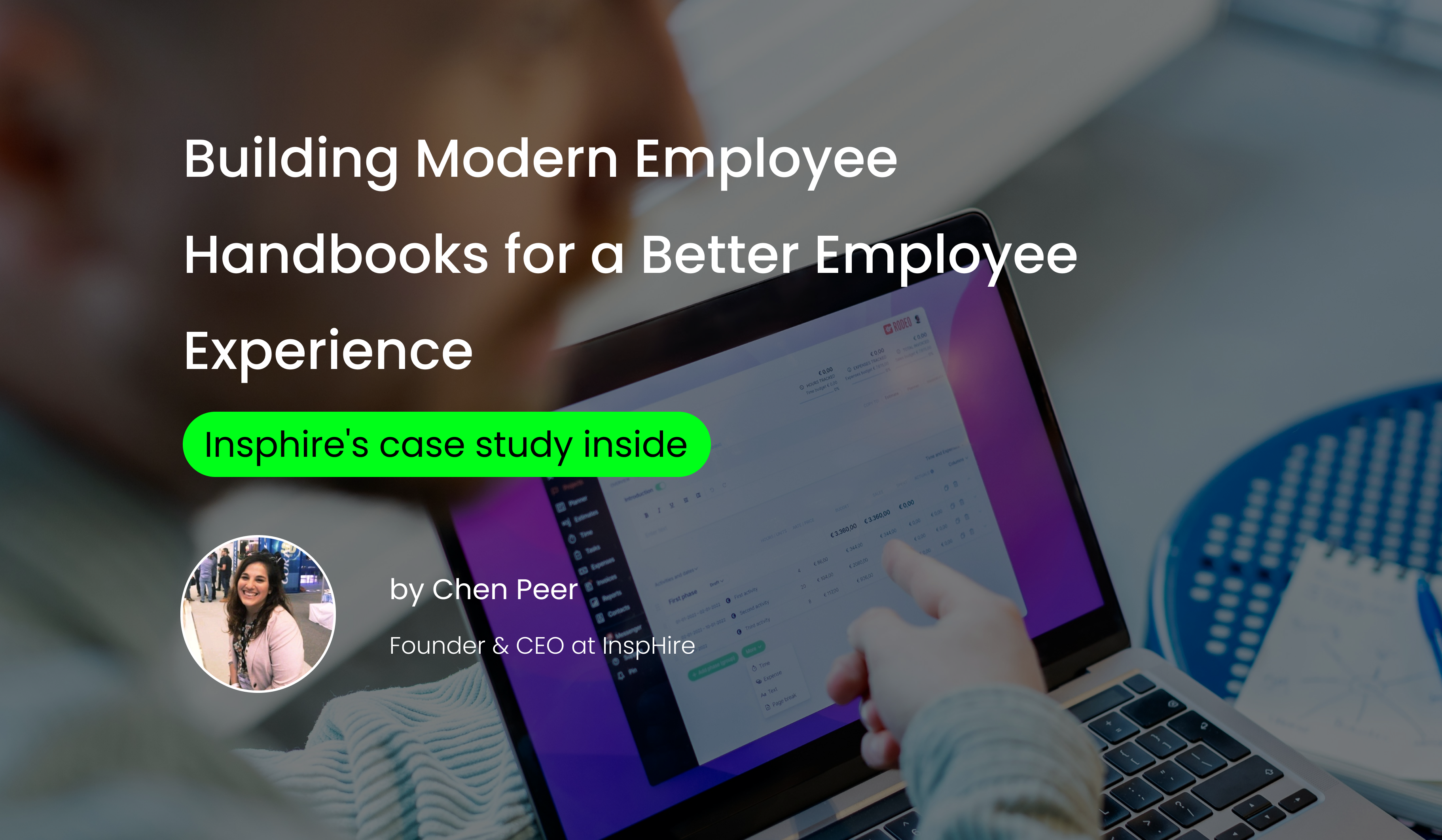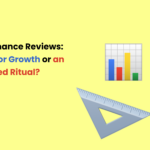by Chen Peer
Employee handbooks play a crucial role in the hiring and employee experience. Today, these handbooks can be engaging and user-friendly, offering a valuable resource for both new and existing employees.
Recently, we developed an employee handbook for our client Bliss, a consumer-focused HealthTech startup. As recruiters we actively engaged with Bliss, we extensively communicated with both potential and existing employees. This direct interaction allowed us to understand the abundance of questions that often arise in these interactions. Recognizing this need, we proposed the development of a detailed handbook to address and consolidate the essential information sought by the employees.
What is an Employee Handbook?
An employee handbook serves as the rulebook for your workplace, acting like a GPS to help your team navigate the ins and outs of your company. In simpler terms, it’s a go-to guide that outlines do’s and don’ts, policies, and expectations, making your workplace run smoothly.
Employee Handbook in the Hiring Process
New employees receive the handbook on their first day or a few days before, aiding in their adaptation by providing answers to frequently asked questions during the initial weeks. It ensures everyone is on the same page regarding matters like days off, vacations, lunch breaks, remote work, and more.
Employee handbooks often encompass policies such as anti-harassment and inclusion and diversity, ensuring employees know their rights are protected and what steps to take if an issue arises. These handbooks streamline information, reducing the need for employees to constantly ask questions of their managers or HR.
What Can It Look Like?
Employee handbooks today can take various forms, not limited to traditional books. Common and user-friendly options include:
Website:
- Big companies often create a webpage or website with all the necessary information, incorporating photos, videos, and request forms. While this is convenient and can be automated, it may be expensive and challenging to develop and maintain.
Notion/Asana/Trello:
- Platforms like Asana, Notion, or Trello offer an easy way to gather information. It’s advisable to use a platform your company already utilizes for convenience.
PDF:
- Old-school PDF files remain relevant, offering a classic and convenient format. They can be made more engaging with images or even presented as comics. However, PDFs are prone to being lost and may not be very user-friendly.
Contents of the Employee Handbook

Creating an effective handbook involves covering various topics to provide comprehensive guidance. Essential paragraphs commonly found include:
- Welcome Message
- Company Mission and Values
- Employment Relationship
- Anti-Discrimination and Harassment Policies
- Code of Conduct
- Work Hours and Attendance
- Compensation and Benefits
- Leave Policies
- Performance Expectations
- Employee Benefits and Perks
- Termination Policies
- Acknowledgment of Receipt
- Office-related Information (Wi-Fi, Printers, Parking, Amenities)
Our Project for Bliss
Bliss, a HealthTech startup with 15-20 employees, utilized Asana for project management. We chose to create an employee handbook on Asana and also developed a PDF version for convenience.
Steps involved:
Content Approval:
- We started by creating and approving the content, tailoring it to Bliss’s specific needs, such as detailing work hours for employees in different locations, like the US.
Information Gathering:
- We collected information from different departments and individuals responsible for various aspects of the company.
Building and Design:
- With all the information gathered, we built the handbook on Asana, incorporating design elements. To make it more enjoyable, we added funny pictures, memes, and team photos to showcase the company’s atmosphere.
Modern employee handbooks are essential for enhancing the employee experience. Our project with Bliss demonstrated how tailored, well-designed handbooks can provide clarity, foster a positive work environment, and streamline onboarding. By utilizing tools like Asana or engaging PDFs, companies can create accessible, comprehensive guides that support their teams effectively. Investing in a modern employee handbook ultimately contributes to a more harmonious and productive workplace.






